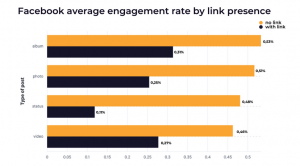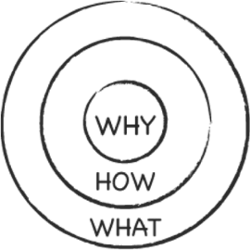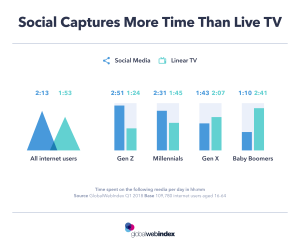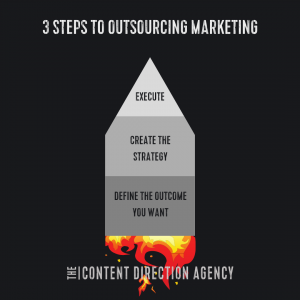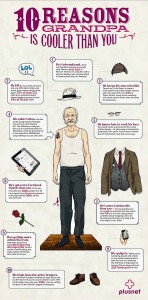
Facebook is at it again.
They recently announced that they are significantly altering their users’ News Feed updates. Facebook will be deemphasizing and/or completely removing the feature that shows what a friend liked or commented on.
You’ve certainly seen these in your own feed from “that friend” who you met one time five years ago and seems to have an affinity for just about everything on the Internet. Yeah, that one. Facebook is instituting this change based on customer feedback. To be fair, we’ve all had the ability to hide or block these friends numerous times, but just never get around to it. So Facebook is simply helping us lazy users. But I digress.
So what does that mean for marketers and small business owners desperately trying to reach the right audience? Already the expectations are greater and the audience pools are shrinking. Many small businesses rely heavily on “friend-likes” as a major source of word-of-mouth, and now we have to deal with this?
Relax. Facebook isn’t a charity. You can still reach your audience. Just not this way anymore. It’s going to become increasingly hard for businesses to reach non-fans organically, so they need to put separate advertising measures in place in order to reach people who are not already fans.
At Social Media Beast, we’ve been helping our clients adapt to these changes, and from what we’ve learned here are six Facebook marketing hacks we’d like to pass on to you:
1. Stop using “Friends of Fans” audience targeting. Okay, this is an obvious one, but it was still an option through targeting at the time of this writing. For all existing campaigns, switch the targeting to just fans, or use a different audience (from retargeting pixel, database upload, etc.). Go in and change the targeting right now (I’ll give you a minute to switch tabs and come back).
2. Create a custom ‘non-fan’ ad audience for your business or clients. This is very easy to do. We started creating them immediately after the option was introduced. You can do it the very next time you boost a post: Select ‘Create Custom Audience’—>Set your parameters—->Be sure to name it by description (client name, targeting segment, etc.). Your audience is now saved for the next time you’re running a campaign and for every campaign that follows.
3. Start separating all of your ‘Non-Boost’ campaigns into audience segments. Another straightforward “hack” (I can just see the comments now), but you’d be surprised how many smart marketers aren’t doing this right now. So now that Facebook is forcing our hand a bit, why not take the task to its conclusion, right? Separate all your fan and non-fan campaigns. Set up campaigns to test specific variables (interests, behavior, etc.). Setting this up all at once for every campaign or client is definitely a hassle, but will pay off in spades down the road. The effort put into segmenting audiences now, will help you target much more efficiently for every campaign that follows.
4. Test campaigns by removing the News Feed option altogether. This is the riskiest option on the list. The point here is that the way trends are going, advertisers may not always have access to users’ News Feeds in the future. There are no guarantees, manuals, or guidebooks when these changes come along. So just take the time now to make this a part of your testing. It’s similar to testing and reacting when there is a change in Google’s search algorithm. We don’t know how campaigns will respond. You’ll always have your ‘Control Group’ of the regular ad sets that you will continue to run. Why not take the opportunity to see if there is something missing in your approach. The worst case scenario is that you learn what doesn’t work and add to your list of best practices.
5. Develop “generic branding” posts specifically designed to be boosted to both fan and non-fan audiences alike. An example would be: “Still waiting for a reason to come out this summer for the best ribs in the city?” This type of post is a simple reminder and engagement generator among existing fans. It also serves as the type of post that can easily be promoted to non-fans as both a direct marketing piece, as well as enticing them to become fans of the brand.
6. Be sure to consistently run at least a lower level “Page Likes” campaign. I know these have been marginalized by many marketers recently. However, we need to remember that these changes are creating a greater divide between fans and non-fans. You will have to actively develop them both. It’s now more difficult to reach non-fans through your existing fans, so you’ll have to find (or revert to) another proven way to consistently develop the fanbase.
If these upcoming changes work exactly as Facebook describes, it will drastically impact your current campaigns. If you want a benchmark, just take a look at your brand’s Facebook Insights to see how non-fans are potentially receiving your message.
Combined with the algorithmic decrease in reach adopted last year, this News Feed update puts a stranglehold on any potential organic reach of the average brand. To combat this, you’ll need to become a bit more savvy with the ad dollars that you’re already spending, and alter your brand’s approach to marketing on Facebook.
(182)

